Like all military and civilian vehicles before and since the First World War, British tanks were given unique registration, or serial, numbers.
Beginning with number ‘1’ would have allowed the Germans to easily work out how many tanks had been built, so this wasn’t done. Later sequences also contained gaps, making the German’s job even harder. Each tank kept its serial number throughout its life, regardless of any moves between units. They were most commonly painted on the side of the vehicle towards the rear.
This table lists the number ranges assigned to British First World War tanks (although not all these vehicles were actually built).

| Mark I | Male | 701 – 775 |
| Female | 501 – 575 | |
| Mark II | Male | 776 – 800 |
| Female | 576 – 600 | |
| Mark III | Male | 801 – 825 |
| Female | 601 – 625 | |
| Mark IV | Male | 2001 – 2100 |
| 2301 – 2400 | ||
| 4001 – 4100 | ||
| 8001 – 8200 | ||
| Female | 2501 – 2900 | |
| 4501 – 4700 | ||
| 6001 – 6200 | ||
| Mark V | Male | 9001 – 9200 |
| Female | 9251 – 9450 | |
| Mark V* | Male | 9501 – 9700 |
| Female | 9751 – 9950 | |
| Male | 10001 – 10300 | |
| Mark V** | Male | 10501 – 10650 |
| Female | 10701 – 10850 | |
| Male | 10901 – 11500 | |
| Whippet | A200 – A399 |
Crew Numbers and Names
On paper Tank Battalions contained 60 crews and 48 tanks and were split into 3 Companies, with each Company split into 4 Sections. Shortages of tanks meant that although Sections were intended to have 4 tanks and 5 crews, they could often only field 3 vehicles.
Crew Numbers identified the crew aboard each vehicle. They were usually painted prominently around the vehicle for ease of recognition. Unlike the serial number, they could change frequently.

The numbers were alphanumeric, identifying battalion and crew, so A24 was an A Battalion vehicle and J12 contained a crew from the 10th Battalion. Although battalion names switched from letters to numbers at the end of 1917 the alphanumeric codes were kept.
Officially this number designated the 8 man crew not the tank – the amount of maintenance early tanks required meant that attempts to link crews and vehicles over the longer term weren’t practical, as there was no guarantee the same tank would be available.
As an example, this page from Major Philip Hamond’s notebook lists the members of crew F41 (the famous ‘Fray Bentos’), but contains no reference to which tank they crewed.

Crews usually named their tank, and these names almost always began with the letter of their battalion, for example N37 ‘Namur’ in 14th Battalion or C56 ‘Crusader II’ in C Battalion. Roman numerals after a name tell us the crew were onto their second or third tank.
Training Numbers
Tanks used for training in Britain were assigned a two, or later three digit number, as they didn’t belong to a battalion. Presentation tanks distributed around the UK after the war were almost all training machines, with their numbers often clearly visible on photographs. This didn’t, however, stop the officer responsible for delivering the tank recounting tales of its exploits on the battlefield to the enthralled crowd!





